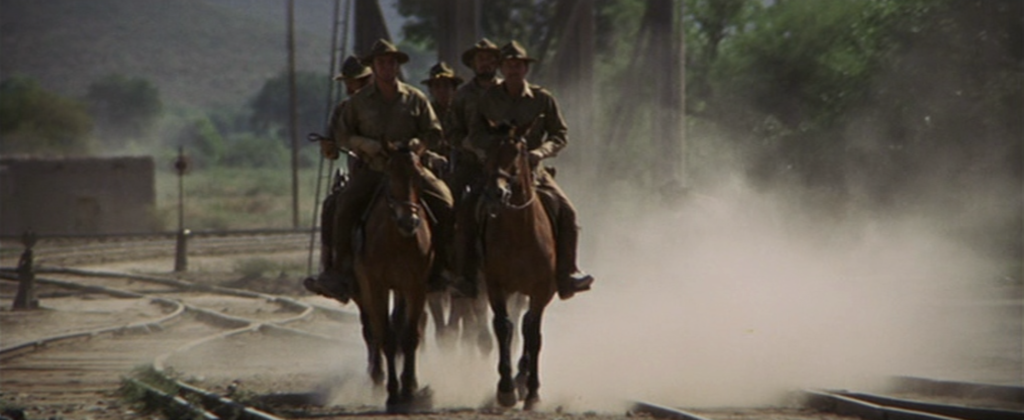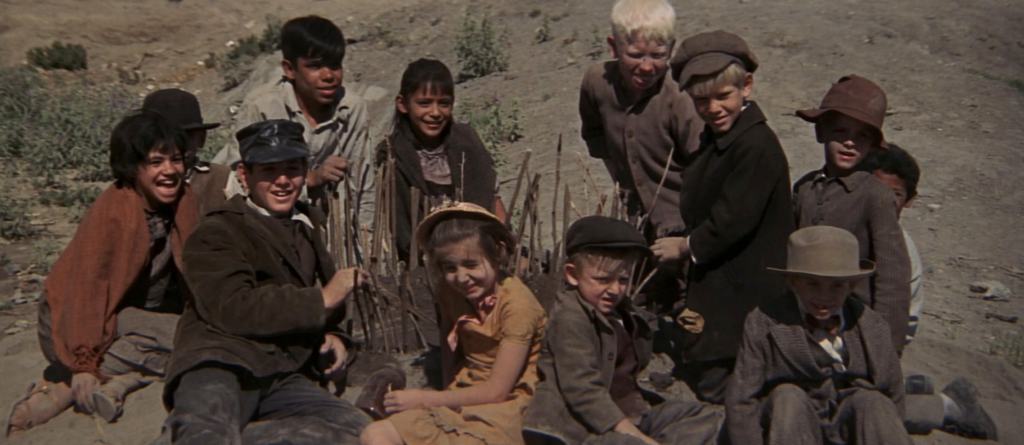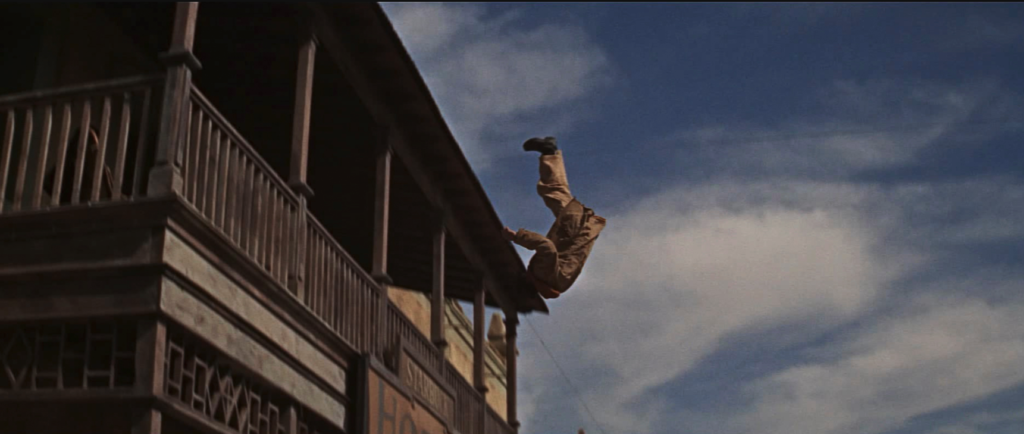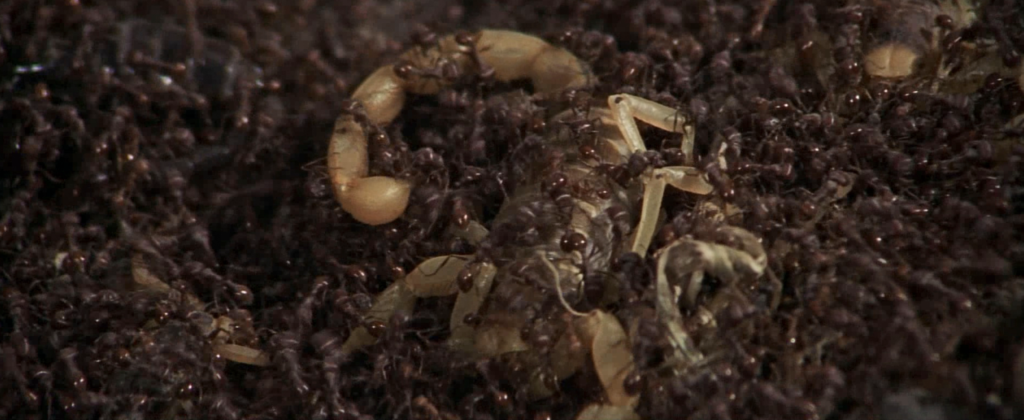| Brogan Earney |

The Wild Bunch plays at the Trylon Cinema from Sunday, April 9 through Tuesday, April 11. Visit trylon.org for tickets and more information.
Sam Peckinpah’s The Wild Bunch has been a staple in American cinema since its release in 1969. Mostly known for its aggressive violence and its intense style of editing, the film pioneered a new age of filmmaking and is often referred to as the day American cinema lost its innocence. Now, for the next couple paragraphs I could talk about how the film introduced a relatively new technology of blood packs and electronically simulated bullet hits, or the fact that the original cut contained around 3,640 editorial cuts, more than any Technicolor film ever processed up until that point.1 But instead, I am going to talk about one specific scene that takes place right at the beginning, and how it sums up the overarching theme of the film.
As soon as the credits start to roll, we see The Wild Bunch stroll into the quiet western town. The first encounter they have is with a group of young boys and girls gathered around a manmade pit of sorts. They are laughing and poking into the pit when the bunch suddenly catches their attention. As soon as our “heroes” ride by, the children return to whatever is amusing them. What is it, you ask? The children have dropped three scorpions into a large pit filled with fire ants. They watch as the ants aggressively attack and attempt to kill the larger predators that have been thrust into their home. Now, at first glance or first viewing of this film, this seems like a throwaway scene or just a convenient way to make the viewers uneasy. But as the film goes on, the scene stands for everything the film is about: violence.

Violence has been an inherent part of the human condition throughout history, but it was especially prevalent in the American Frontier. Oddly enough, if you look at most films about the American Frontier before the late ’60s, violence isn’t really shown. Sure, there is violence around all of the stories, but it’s treated as either heroic or tragic. In John Ford’s The Searchers (an objectively incredible film), most of the violence that is shown ends up being people just falling from horses. Now don’t get me wrong, I love watching people fall from horses, but it doesn’t really emphasize the stakes of the situation. On the other hand, whenever the film’s antagonists succeed in a violent act (for example: the Native American raid on the Edwards family), it is never shown onscreen but rather implied. In contrast, the scene from The Wild Bunch that I’m referring to ultimately works and is still, to this day, one of the most chilling scenes in American cinema. Before The Wild Bunch, violence committed by the protagonist was perceived as heroic and violence committed by the antagonist was deemed malevolent and never brought to light. Sam Peckinpah’s film has a different take: violence is always bad, no matter who commits the act.
Peckinpah understood that American audiences were suffering from desensitization when it came to violence: “We wanted to show violence in real terms. Dying is not fun and games. Movies make it look so detached. With The Wild Bunch, people get involved whether they like it or not. They do not have the mild reactions to it.”2 If there’s one scene that shows this best, it’s the entire first 15 minutes of the film. After the bunch rides past the group of children torturing the insects, they head for the town’s bank and attempt a payroll robbery, hoping that the busyness of the town parade will aid in their success. Of course, they learn that a group of bounty hunters are expecting them and they have to make a rash decision on how to escape. What do they do? Unleash hell! Like a bunch of scorpions trying to fight their way out of an ant hill, they shoot at anything and everything, not worried about what gets in the way as long as they get out of there alive and with the prize. As soon as this decision is made, what commences is the single-bloodiest battle to ever be filmed in American cinema at the time (until the end scene, of course). With the help of the brilliant editor Lou Lombardo, we witness it all: gunshots exploding, bullets flying, blood bursting through the backs of bodies, men falling off of balconies, women and children running for their lives. It’s pure chaos, like all violence is. There is no good or bad—it’s all bad. Peckinpah doesn’t even suggest who we should be rooting for, he just lets us take it all in.

As soon as the action dies down, the Wild Bunch race victoriously out of town. They pass the same children whom they met on their way in. The kids are still being entertained by their simple little game of ants versus scorpions. For a moment, the bunch catches their attention. The children notice how they now seem a little more threatening and in more of a hurry than before. But as the bunch ride off, the kids lose focus and return to their game. At this point, they must be growing bored with it because they have now decided to throw some hay on the pit and just burn it. Perhaps a good analogy for the flames of violence consuming us all? At least that’s how I read it. Others might say that the game closely resembles the ending of the film, where the ants represent the Mexican army and the scorpions represent the bunch. Outnumbered and forced to fight their way through hundreds of enemies, they know there is no chance for them to make it out alive, but they fight valiantly anyways. In the Wild West, no one makes it out alive. But, like the great William Holden said, “I wouldn’t have it any other way.”

NOTES
1 Simmons, Garner. Peckinpah: A Portrait in Montage – The Definitive Edition: 50 Years After “The Wild Bunch” from the Writer Who Knew Him Best. Equuleus, 2019. 312.
2 Shelton, Jacob. “The Wild Bunch: Violence Sam Peckinpah Hoped Would Repulse Us.” Groovy History (June 30, 2019). https://groovyhistory.com/wild-bunch-violence-sam-peckinpah/8.
Edited by Olga Tchepikova-Treon
